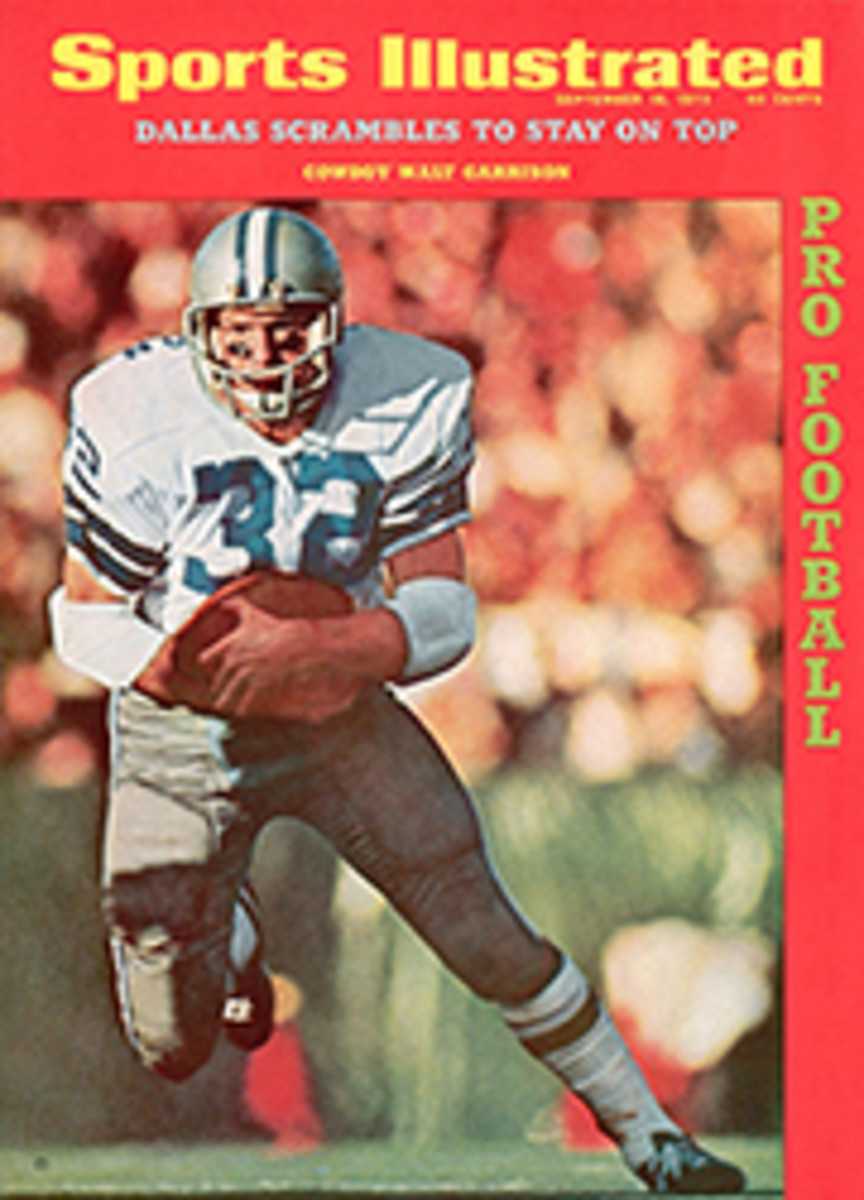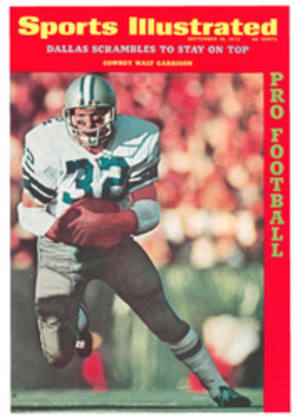
TIME TO TAKE STOCK
Across the landthe computers hum and click and whiffle, and out of them come electronicanswers to the critical question of what play to run on third and 18 deep inyour own territory while trailing by 10 points in the eighth game of theseason. And out of them comes, at the touch of another button, the best263-pound defensive tackle who can move well to his left, read a draw and closethe trap hole and is eligible for the draft.
The automation ofthe '70s makes for brilliant plays, executed by extraordinary players. It willalso make for another superseason for the National Football League—or will it?Increasingly, it has become apparent that professional football, for all itscomputers and modern methods, for all its talented players and years ofexperience, has problems, some involving playing conditions, some involving theplay itself. This probably will not be the year in which they are solved, butit may well be a season when the need for a change of some kind becomesobvious—even to the people who run the game.
To go back, 13years ago the NFL was made up of 12 teams. Questions concerning them werehandled by Bert Bell, a small, fat irascible man whose offices occupied somescruffy rooms in Bala-Cynwyd, a suburb of Philadelphia. Bell was given to quickand hard judgments, such as suspending indefinitely two New York Giantplayers—Frank Filchock and Merle Hapes—simply because they did not report abribe attempt.
Today the league,blown up to 26 teams, is administered from two very plush floors in an officebuilding on New York's Park Avenue by Alvin (Pete) Rozelle, a tall,sophisticated and mellifluous man who once suspended two players for 11 monthsfor betting on NFL games. He has not taken strong action since against player,coach or executive, although one NFL owner was involved in a rather dicey dealwith race horses within the last year. Recently the league raised from $5,000to $25,000 the amount the commissioner could impose as a fine.
In Rozelle'sdefense, he handles a far more complex job than did Bell. Almost routinely hemust make multimillion-dollar deals with TV people where Bell had almost notelevision to cope with. The players have formed a union and accused the leagueof violating the antitrust laws; in Bell's day, a player thought antitrustmeant an uncle had the full confidence of his wife.
But in some waysthe league was a better one in the old days when Bell was always available andwilling to listen to players, owners, innocent bystanders and sometimessportswriters. Once almost as accessible as Bell, Rozelle slowly but surely hasbacked away from the day-today commerce of running his office. Bell was thegeneral manager; Rozelle is chairman of the board.
During theRozelle era new stadiums have popped up all over the league like mushroomsafter a rain, but inside most there has been no grass. The newest arenas arefloored with synthetic underfooting, which from the viewpoint of stadiummanagements makes sense. It is less costly to maintain artificial turf than tohire a corps of groundkeepers to minister tenderly and lovingly to good oldgrass. Also, the new surfaces are playable in all weather. But there is anegative side to synthetic turf, too. Uniformly unforgiving, it has been blamedfor sending many players into early retirement in a crepitation of separatingshoulders, strained ligaments and torn cartilages.
Pro football isinjury-prone enough without adding to the game's dangers, if indeed that iswhat artificial turf does. Before this new season ever began, Roger Staubach,quarterback of the world champion Dallas Cowboys—playing on grass in the LosAngeles Memorial Coliseum—was hit near the sideline and suffered a separatedshoulder that will keep him out of the lineup until at least mid-season. TheSan Francisco 49ers, strong contenders in the NFC West, had no fewer than 11starters hurt at one time or another in training season accidents, and MikeMcCoy, a quality defensive tackle for Green Bay, broke a bone in his foot whileplaying on the hard surface of the Astrodome in Houston. The Los Angeles Ramslost Kermit Alexander (broken elbow), Linebacker Ken Geddes (broken arm) andreturn specialist Travis Williams (torn knee ligaments). The Detroit Lionssuffered a major loss when their fine tight end, Charlie Sanders, separated ashoulder making a diving catch.
Obviously, a newsurface as revolutionary as artificial turf should be thoroughly tested ifthere is any question that it is adding to the high injury rate of the NFL. Asa matter of fact, the commissioner's office has been compiling extensivestatistics on the entire topic of injuries, but it has refused to be drawn intoa public controversy on the subject of artificial turf's potential danger. Itdoes admit that NFL trainers have been asked to file extensive and detailedinjury reports with New York for the past several years. So maybe thosecomputers are being fed something besides statistics on raw recruits and soonthere will be a reasonable comparison of the probability of debilitatingdestruction to players on natural grass and artificial surfaces.
Of course, if itdevelops that there are more injuries on the manufactured fields, it is notgoing to be all that easy returning to grass. The cost will be steep, manyowners have no control over the stadiums in which their teams play—forinstance, many stadiums are built to accommodate baseball as well asfootball—and there is always the matter of TV. Football looks better on the rugthan in the mud created by a hard rain. Backs can run and cut and the TVaudience can see who they are by their numbers, which was never so in thepre-artificial days, when one wondered if they were playing a game out there orwhether they were just a lot of overgrown types engaging in a lively mudbath.
Wheneverpossible, however, the choice of surface should be decided by the league. Thatshould mean the commissioner. If the statistical results are bad, the NFL isgoing to have to make the hard decision to return to grass. But will it? Changeis coming more slowly in football these days, and when it does come, it oftenis so slight as to be almost unnoticeable. This year, for example, looking fora way to produce more action and more touchdowns, now that defenses have becomeso effective, the NFL owners decided to move the hash marks seven and afraction yards nearer to midfield (SI, Aug. 28). During the exhibitiongames—excuse that, Pete—preseason games—there were plenty of high scores, butto what extent the repositioning works can be determined only under regulargame conditions, when the rookies are on the bench and everybody is trying.
Putting the ballin play farther from each sideline supposedly gives the offense more room toexercise its options. But it also becomes more seductive to try a field goal,since the kicker has less of an angle for his attempt. There may be more blahplays in pro football than the field goal, but it would be difficult to findthem. A 50-yard field goal is a true negation of the whole philosophy of thegame, since it rewards the attacking team for its inability to move the balland militates against an exciting gamble by the offense for a first down or atouchdown.
If the pooh-bahsof the NFL—and/or Rozelle—want to soup up the attack, they can try othertactics. First, they can increase the penalty for a missed field goal byreturning an unsuccessful attempt to the place from where it was kicked, not tothe 20-yard line of the defending team. That for sure would force attackingteams either to go for the first down or to punt. Second, relax the rule on menin motion before the snap of the ball and take a maple leaf from the Canadianleague, where the backs are permitted to go in motion in any direction beforethe ball is snapped. This is a simple rule that very well could destroy zonedefenses and revive the long pass as well as increase the deception andeffectiveness of the running attack.
Third, bring backthe two-point conversion used by the AFL in its infancy and by colleges. To profootball coaches, the two-pointer is anathema, understandably. Second-guessingan unsuccessful run or pass for a two-point conversion is the easiest of allchores for a Monday morning quarterback. But it keeps suspense alive in closegames and eliminates, to an extent, the importance of a late field goal thatputs a team ahead by eight points and out of reach of a touchdown.
Fourth, play allgames to a sudden death overtime. No one enjoys a tie. The NFL might evenconsider trying another method for settling ties—give each team the ball forsix offensive plays beginning at the 50-yard line and award the victory to theclub that gains the most yardage.
The NFL mostlikely will not try any of these moves this year. With a few exceptions theownership—the league is beginning its 53rd year—more and more resembles itscounterpart in baseball, afflicted with such diseases of age as hardening ofthe head.
There still is anenormous amount of enthusiasm among pro football's followers, but if the gameis to continue to grow in popularity, the time has come for change.
MAULE'S PICKS
NATIONAL CONFERENCE
EAST
Dallas
CENTRAL
Detroit
WEST
San Francisco
AMERICAN CONFERENCE
EAST
Baltimore
CENTRAL
Pittsburgh
WEST
Oakland
The predictions are those of Tex Maule and not theconsensus (page 52) of the pro football staff, which also includes MortonSharnik, Ron Reid and Joe Marshall.
PHOTO

